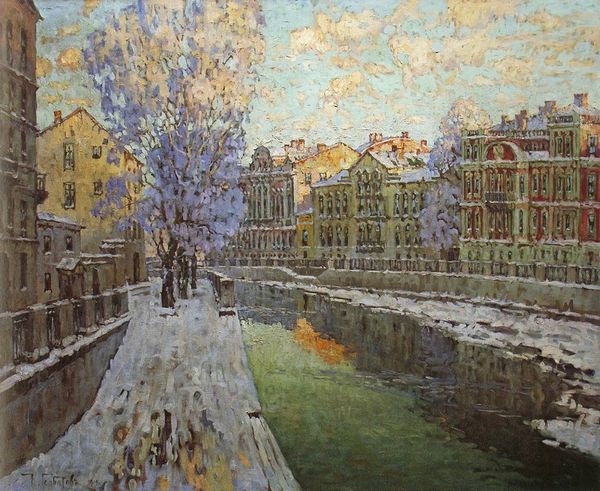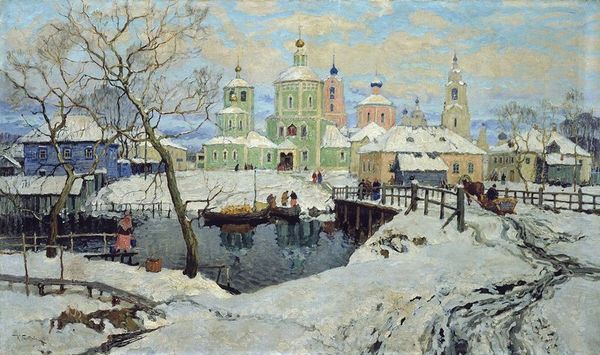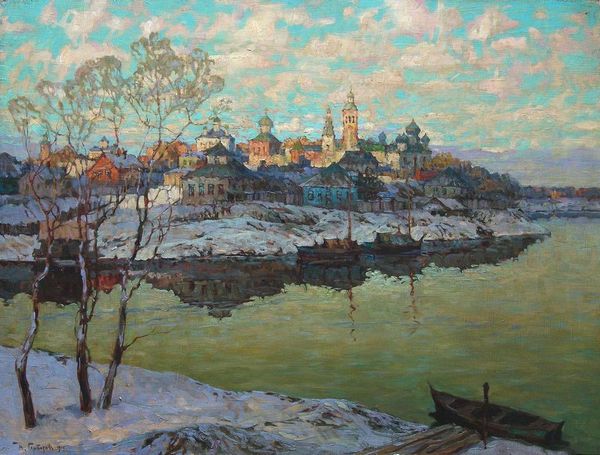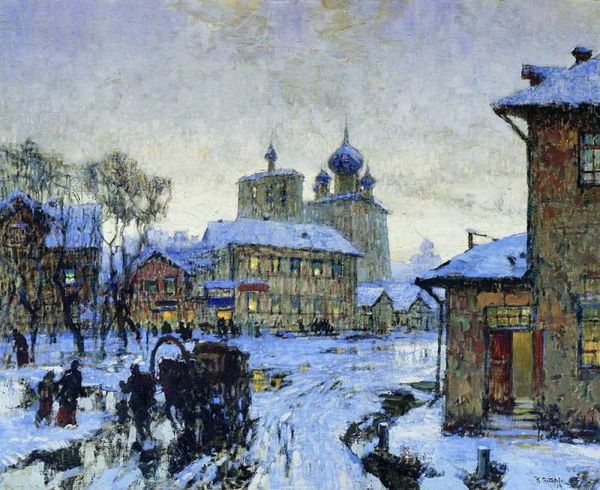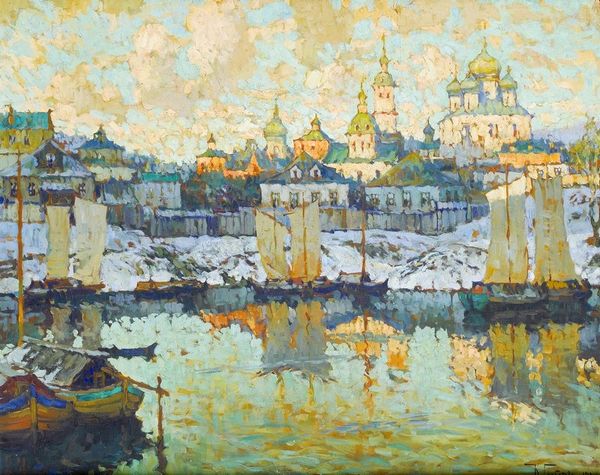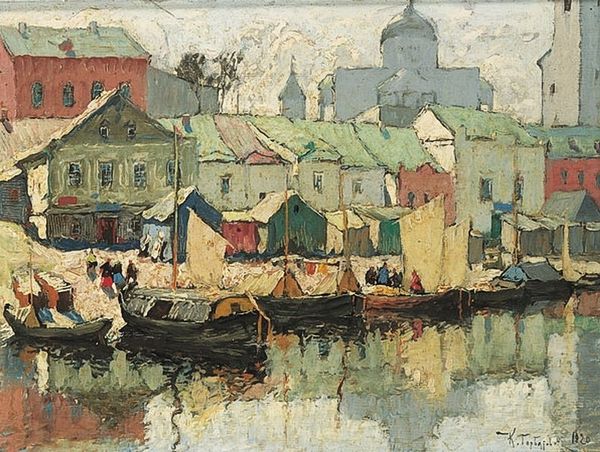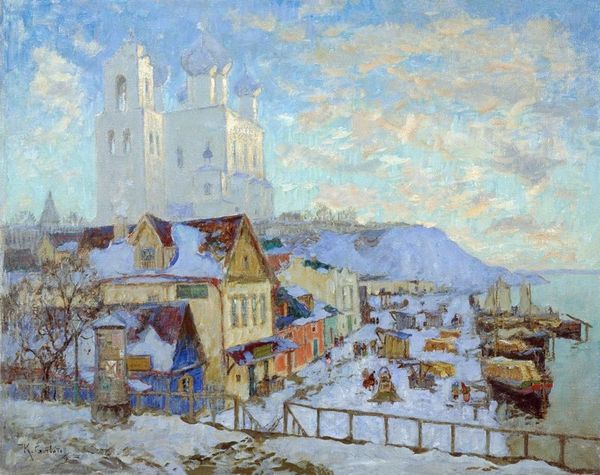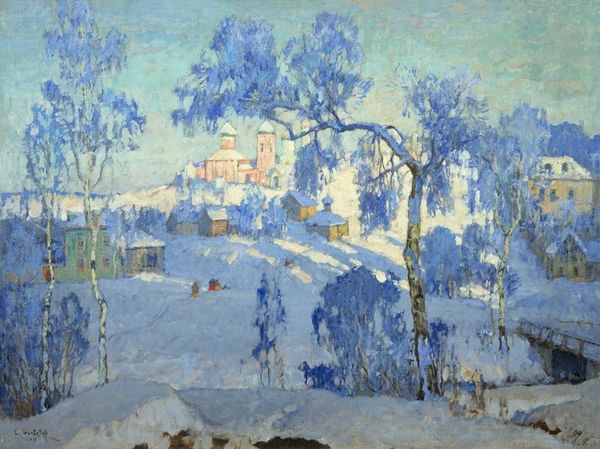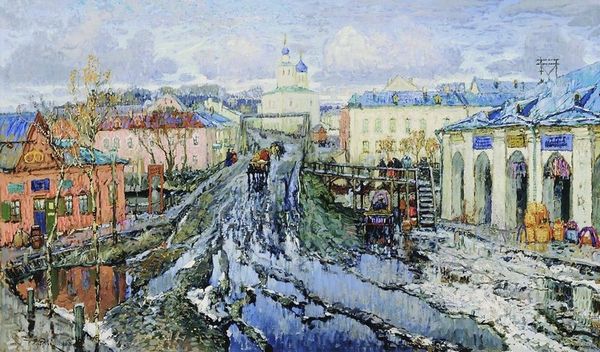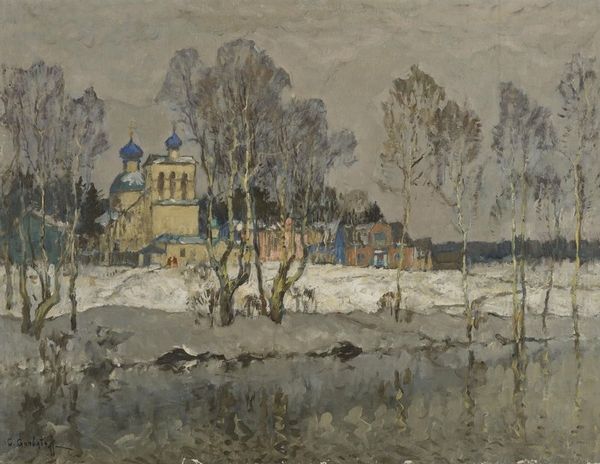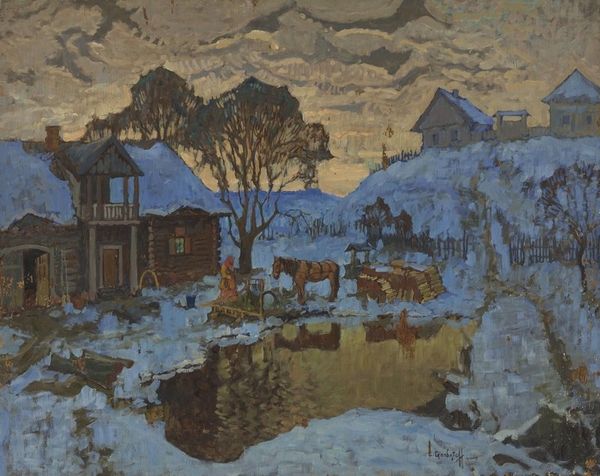
Copyright: Public domain
Curator: Before us is Konstantin Gorbatov’s 1922 oil painting, “The Russian Province in Spring.” Editor: It strikes me as wonderfully melancholic. The palette is dominated by whites and muted blues, creating this rather bleak, yet tranquil, atmosphere. It almost feels suspended in time. Curator: Absolutely. And it’s essential to consider the historical context. Painted in the early 1920s, in the aftermath of the Russian Revolution, it presents a perspective steeped in loss and longing. The themes of displacement and national identity resonate profoundly. Editor: I'm intrigued by Gorbatov's technique here. Look at the way the brushstrokes build up the layers of paint, particularly in the rendering of the architecture and the reflection on the water. There’s a visible physicality in the making, a direct translation of material engagement. Were these techniques novel for the period? Curator: His style reflects elements of both Impressionism and Expressionism. The quick, suggestive brushstrokes capture the fleeting effects of light and atmosphere but there’s also an underlying emotional intensity characteristic of the Expressionist movement. The choice of subject matter—the traditional Russian architecture—further underscores his longing for the pre-revolutionary past. The Church set prominently evokes ideas of cultural continuity and spiritual heritage against the turbulent upheaval of the Soviet era. Editor: Considering the socio-economic context, I’m curious about the accessibility of such art during this revolutionary period. How would this artwork engage with the everyday person experiencing social and political unrest, and how was his craft supported? Curator: During that time, art was employed as political instrument to forward new revolutionary ideals. In contrast, the quiet dignity of this piece could be considered as either a quiet resistance, or nostalgic desire to create an escape for the viewer. Either way, its socio-political impact is considerable. Editor: This close looking reminds me of how labor-intensive artwork, and painting especially, is. Seeing brushstrokes gives that materiality and a sense of that labor back. I appreciate having that reminder and these insights. Curator: It certainly sheds light on complex facets of history and its deep, reverberating impact on art. I appreciate how this brings forward discussions around both time and process, impacting social structures as a whole.
Comments
No comments
Be the first to comment and join the conversation on the ultimate creative platform.

